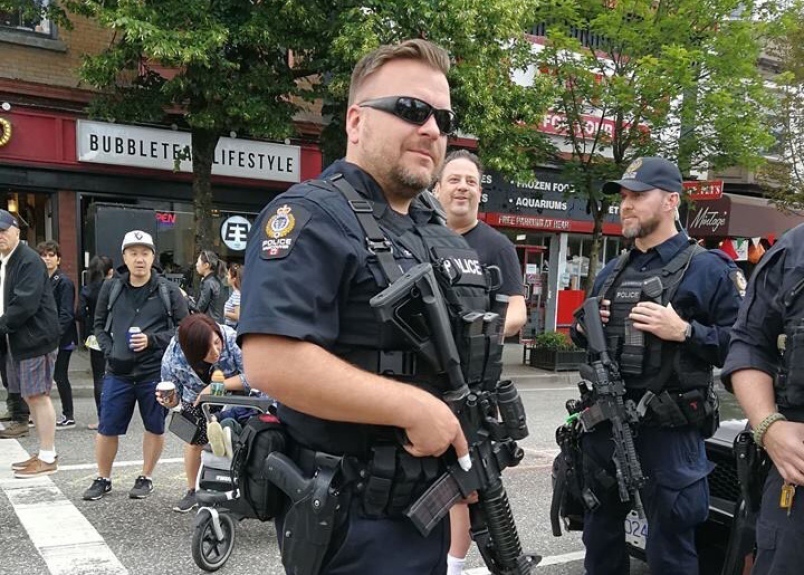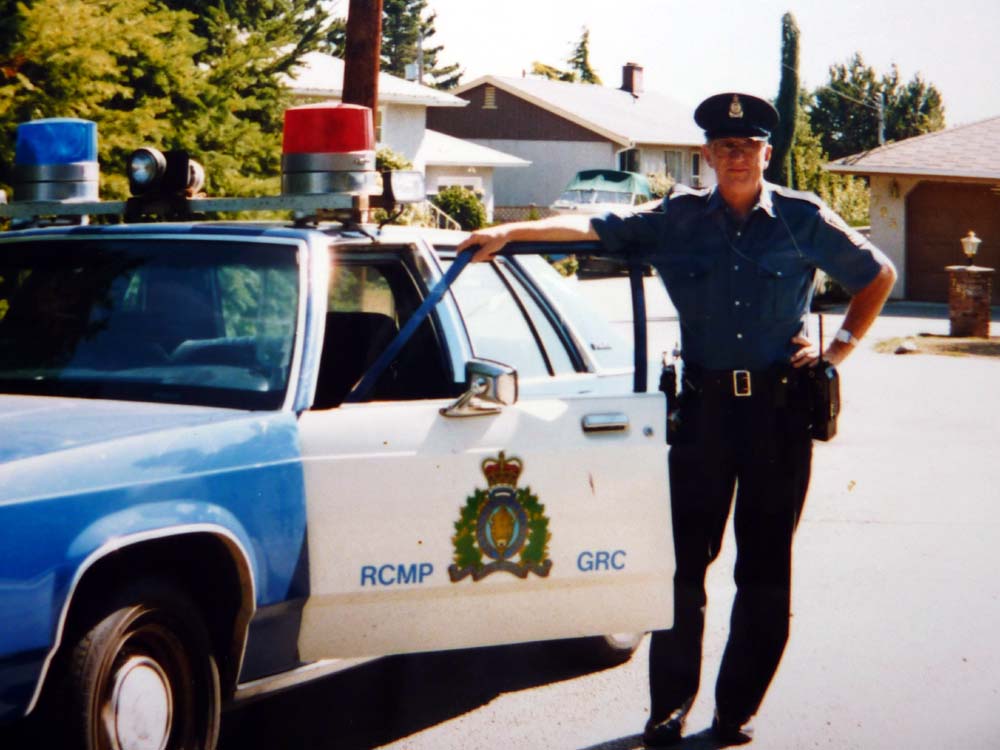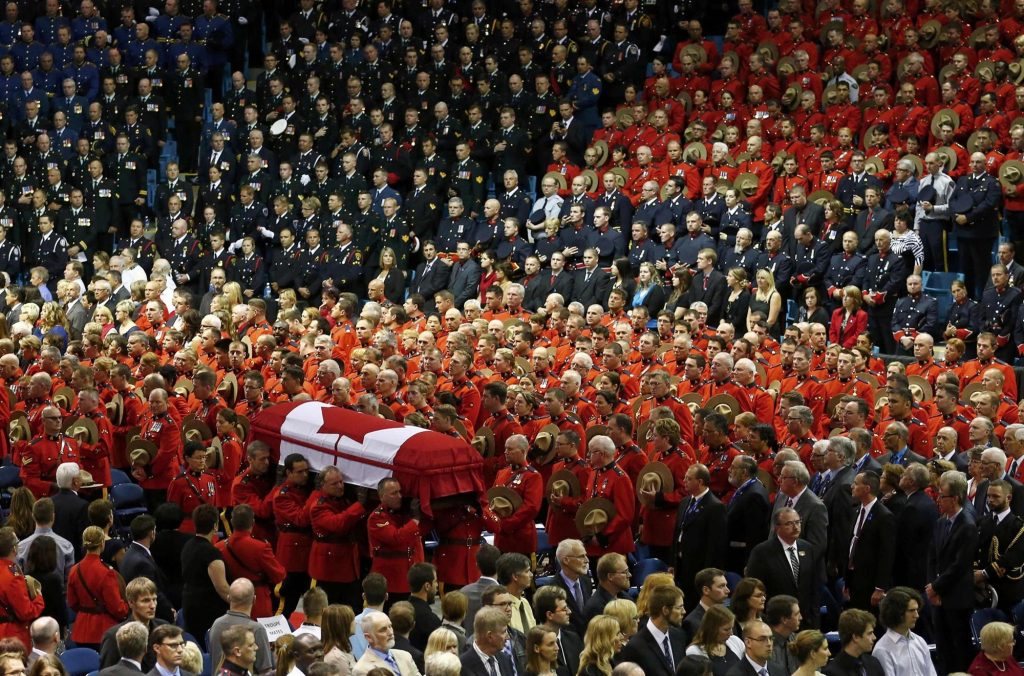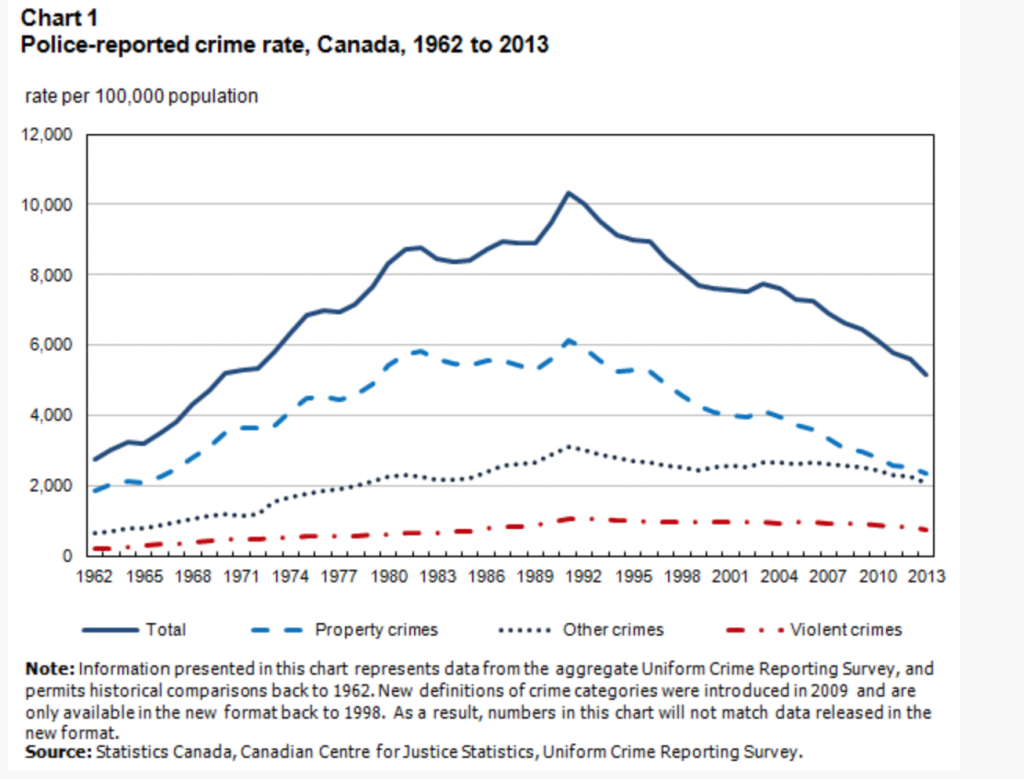Changing the way police do business (Part I)
I don’t think anything demonstrates the solidarity of police officers more than when attending the funeral of a comrade killed in the line of duty. This photo, taken in Moncton in 2014, captures the essence as officers from across Canada and around the world bid farewell to Constables Fabrice Georges Gevaudan, 45, David Joseph Ross, 32, and Douglas James Larche, 40, killed during a shooting spree.
The shields of Central Saanich, Oak Bay, RCMP, Saanich, and Victoria represent the ideals of comrades in arms.
Part II, Comparing differing police cultures
Part III, The past as a guide to the future
Part IV The integration of police services
Link to CBC Podcast: Policing in the CRD
Contact: Harold@mcneillifestories.com
This series of posts will explore some of the past, present, and possible future directions of policing within the Capital Region. It will include discussions about differing police cultures, how they clash and how they work together; and, of course, thoughts about amalgamation, a topic frequently thrust into the public eye.
The Victoria/Esquimalt joint force will be singled out for additional scrutiny, as over the past sixteen years the debate about that merger is also kept in the public eye. While the administrators of the joint force often use the challenges they face as a bargaining chip, it is also used by others to advance an ideological purpose as in a recent letter penned by the President of the Greater Victoria Chamber of Commerce. (1)
Although the post will deal with sensitive areas of police work and police personality, I steadfastly maintain police officers in the CRD and across Canada, are among the very best in the world. Corruption is not a part of our police culture and while it was present in the last century, it was rooted out and systems put in place to ensure it did not return.
When Canadian police officers swear their Oath of Office, they take that oath to heart. What is sometimes lacking is solid, independent oversight of the sort that provides an unbiased assessment of police actions when those actions are called into question be they external or internal.
Also, in press articles, when references are made to ‘dysfunction’ or ‘a broken system’ by the press or others, they are overstating their case. While the challenges to be addressed are difficult, those challenges do not stop our police officers from maintaining an even-handed approach in enforcing the law and helping citizens within our largely peaceful communities.
Part 1: Police solidarity and the push for amalgamation
1. Introduction
While solidarity among police officers, regardless of the colour of their uniform or the crest on their badge, is always high, that does not mean relationships between members and forces is always smooth. As we move toward the third decade of this century, a number of important issues in policing have yet to be addressed in the Capital Region and across Canada. Sometimes this relates to money, but more often it involves how police do their job.
A recent Times Colonist opinion piece in the Island Voices section was titled: Think outside the box on policing costs, by Stan Bartlett and Bruce Kennedy, speaks to the issue. I agree, thinking outside the box is good, but that requires the mind to come up with novel ideas and, as we know, that can be difficult. Instead, why not unpack the box, then look at policing issues by turning them around, upside down, or inside out, all the while asking, “why do we do this?” or, “is there a better way?”
agree, thinking outside the box is good, but that requires the mind to come up with novel ideas and, as we know, that can be difficult. Instead, why not unpack the box, then look at policing issues by turning them around, upside down, or inside out, all the while asking, “why do we do this?” or, “is there a better way?”
As a means of finding ways to achieve some peace and harmony on the policing front in the Captial Region, this post series outlines several changes made over the past half-century when someone decided to give the box a good shake. While the focus will be on municipal departments and RCMP in the CRD, many of the same issues apply to every police force across Canada.
Past changes included having police divest themselves of duties that could better be performed by civilians or outside specialists dedicated to specific tasks. As you might guess, entrenched systems are difficult to dislodge, particularly in military or semi-military organizations like the police. Even in this century, when surrounded by all manner of new technologies, police continue to perform some jobs the same old way simply because they have always done those jobs that way. Why? The reasons are not easily explained.
The changes suggested in this post series are meant to encourage discussion on how to enhance the role of police officers, not degrade them, and with keeping police connected to the communities they serve. That goal must always remain central to its mandate. If, because of internal or external demands, departments move away from community service, they tend to be viewed more like an occupying force whose uniforms, weapons, vehicles and general demeanor speak to power,  rather than being at one with the communities they are sworn to serve. We see that happening right across Canada as many police agencies take on a more militaristic character.
rather than being at one with the communities they are sworn to serve. We see that happening right across Canada as many police agencies take on a more militaristic character.
Having traveled to Vancouver for several public events in recent years, VPD officers, like those in this photo, are regularly a part of the scene. The stated reason for being present is to deter a terrorist attack. Having spoken to several members (I have a calling card in my pocket), they no more expect a terrorist attack than do I.
But, there they stand in a relaxed manner. It is a special duty that pays well and who are they to argue. I know, during my years of service I snagged my fair share of time and a half and double time for policing events in and around Victoria. It certainly helped to pay the mortgage. And, of course, how many men or woman would pass up the opportunity to do what the police officers in the above photo are doing?
As for the military bearing, when you look at many police officers today, you can see similar aggressive choices being made in terms of uniforms, weaponry, police vehicles and colours. Locally, the two small departments, Oak Bay and Central Saanich, have similar uniforms, but their vehicle colours and demeamor are more friendly. The RCMP, for some reason, are not nearly as aggressive in their colour choices.
I wonder what happened to the “Thin Blue Line”? That colour was chosen for good reason, but it seems 911 and fear of terrorism changed all that. Black is the new blue.
Now, let’s move to the more mundane, that of day to day police work.
2. Changing the Way Police do Business.
Seldom a day goes by without reading or hearing another media or social media comment about challenges faced by police agencies in Greater Victoria. Within this mix, the Victoria Police Department (VicPD) get more than their share of attention as disputes about budget increases, heavy workload, and workforce re-allocation seem endless. (2)
Through this stream of rhetoric, the only solution offered by or for VicPD is a lot more money and personnel, or amalgamation. From the time I entered policing in this area in 1964 to my retirement in 1994, then to the present day, this same discussion takes place during every budget and election cycle. But, is money, personnel or amalgamation the best, or only solution?
The challenge with moving forward on amalgamation is that once it is complete, the underlying problems remain, and in this mix, VicPD remains the most vulnerable. If the core issues could be addressed first, perhaps other, mutually agreeable solutions, would become visible. While that may include some form of amalgamation, it seems more likely joint force cooperation would be better suited to maintaining a community-based policing profile in this diverse region.
Many people (in Victoria and a sprinkling in Saanich), presuppose that after amalgamation everyone will wake up the next morning, or a year later, and all will be goodness and light. It won’t. Many of the reasons it won’t, became apparent during my thirty-year career. While working major and minor cases and in daily interaction with other departments, including the RCMP, it was apparent police cultures across the region are very different. It is my considered opinion, blending these cultures will be a long and painful process.
There are reasons why Oak Bay, Central Saanich, and Saanich gravitate towards one another, just as Esquimalt was merged with Victoria rather than Saanich, which is embedded in the cultures of these forces. The similarities and differences will be explored more fully in Part II of this series.
Also, in these discussions, size matters and there is a considerable body of literature indicating police organizations in communities of 50,000 or less are the most efficient. Beyond that, diseconomies of scale kick in and community policing initiatives slide to the back seat. Here is some background information along with a link to the full series of studies.
“The analysis in this paper indicates that despite claims and popular assumptions surrounding police regionalization, large regional police services are not demonstrably more effective or efficient than medium-sized non-regional services. The primary reason is that policing seems to be mainly a local issue. In addition, there is good evidence to suggest that medium-sized police services (i.e. those policing areas of about 50,000) are more successful in dealing with crime and operational costs than much larger regional services due to diseconomies of scale (Ostrom, 1976a; Ostrom et al., 1978; Southwick, 2005; Lithopoulos & Rigakos, 2005; Found, 2012).”
“One reason why larger departments may be less effective or efficient is that the percentage of officers assigned to patrol decreases as department size increases. Larger departments are more likely to assign personnel to specialized services such as criminal investigation, traffic control, juvenile services, administration, training, detention, communications, supervisory roles, or crime labs.” (A Literature Review on Amalgamation of Police Agencies in Canada)
I will now close off on this section with a couple of footnotes and some background on the author of this post. I go into this background to let people know the author’s experience in emergency service goes back to the early sixties and during that time was heavily involved in pushing for change within the local policing community, and in later life, doing the same thing in other organizations.
What’s up next?
Part II is up next and in it, specifics of each of the police cultures in this region will be discussed in-depth, along with a thumbnail sketch of the history of each. It is in this history we begin to understand why each force developed in a slightly different manner and in this mix, the leadership qualities of the Chief Constables played a critical role.
Part III of this series will hone in on police practices where changes are needed, and how one might go about implementing those changes. By going back fifty years, we can see that change is possible, and while it is sometimes brought about force (e.g. legislative change and union activity), it often occurred because leaders from within the police community identified better ways to doing things. Across the spectrum of police agencies in the CRD, there is plenty of talent to help make that happen.
Harold McNeill
Detective/Sergeant (Retired)
Oak Bay Police Department
(1) Amalgamation: Is there a hidden agenda? The push comes primarily from politicians, organizations, and individuals in the City of Victoria. Given the depth of literature pointing out how amalgamation would be detrimental, it’s hard to understand why the push continues.
Groups like Amalgamation Yes, the Greater Victoria Chamber of Commerce, Times Colonist and others, will not even look at the literature and, instead, push for new studies hoping at some point they can find a way to obtain an outcome in favour of their point of view. It seems the actual purpose of amalgamation is one of gaining political control rather than improving conditions for ordinary citizens.
With respect to the Chamber, a FB friend observed, “it’s interesting the Victoria Chamber of Commerce call themselves “Greater” as there are other chambers including Esquimalt, Saanich Peninsula, WestShore and Sooke – kinda’ like our unamalgamated municipalities!” Perhaps the Victoria Chamber is just grabbing the name in anticipation of taking over in the future.
(2) Crime Trends: Are things actually as bad as described in the Chamber letter? Consider the past thirty-years in this fifty-seven year crime trends chart.
From the early 1990s to present, the crime rate per 100,000 and per police officer has taken a massive downturn across Canada. Why?
Either society is changing for the better or the police are doing a slambang job of reducing crime. In the face of this downturn, why do the media and others always claim things are getting worse and in this, VicPD is taking the hardest hit? Is every other police agency across Canada gifted with a crime rate that is significantly lower?
For police members in VicPD and, indeed, across the entire CRD, crime would need to double in order to arrive at anything near the same rate as that being tackled by their comrades of three decades back. I won’t take time to spin out the numbers as they can be readily discerned in the above chart.
About the author
The following information is provided to demonstrate the author has considerable practical, educational and historical experience in the fields about which he writes.
McNeill spent much of his life working in, studying and writing about all manner of emergency service work, from the Cold War to the present day. The trek included a few years with the US Air Force Strategic Air Command in the early 1960s while working as a civilian Crash Rescue Specialist. at the RCAF Station, Cold Lake. During that same period, he earned his pilots licence and worked part-time building hours towards his Commercial Licence while flying bush planes in Northern Alberta; When the SAC base closed, he moved to B.C., and after completing police training at the Vancouver Police Academy, spent thirty years with the Oak Bay PD.
In the early part of his career, he earned a Bachelor of Science degree at the  University of Victoria, following which he spent two years updating the administrative and investigative reporting systems in the department as they were hopelessly mired in a pre-war era.
University of Victoria, following which he spent two years updating the administrative and investigative reporting systems in the department as they were hopelessly mired in a pre-war era.
In researching the best practices of the day, he visited all the larger Lower Mainland departments and detachments, to study their operations. During this same period, he researched several fixed schedule shift systems, tried a couple in Oak Bay, and finally settled on the 12-hour system. Following implementation, he collaborated with Dr. J. Barton (Bart) Cunningham of the UVIC School of Public Administration in evaluating the effects of the 12-hour shift on worker welfare and productivity. That shift system is now standard for most emergency services workers and and while it does have short-comings, it is little changed from the time it was introduced in Esquimalt and Oak Bay.
During that same period, McNeill carried out several studies on the nature of police/citizen interactions, including one study in collaboration with Cst. Terry Toone, a recruit training classmate, and VicPD member. Terry went on to become a Deputy Chief Constable of that force. Over the years, McNeill continued to evaluate what effect police activities such as radar speed law enforcement and other traffic calming initiatives had on changing driver behaviour. More will be discussed on this subject in Part III of this series.
When travelling to other cities and Provinces on police or association (union) business, he often took a few hours or a day, to review their management systems of others (e.g. Edmonton, Saskatoon, Toronto, and several smaller centres). On one of those visits back in the 1970s, it was rather eye-opening to find a large department like Toronto was considerably behind the larger departments of the BC Lower Mainland.
Locally, Saanich, that had been under the leadership of several forward-looking Chief Constables like John Post, was well along the path of updating their systems. Another thing that helped to propel change was the rise of strong Police Associations (unions). A 1981 paper written by Barbara Ann Suzon Fleury, “The historical development of police unionism: three case studies from British Columbia” provides extensive background. If you have an interest in that history, and it is interesting, I can email you a .pdf copy.
After retiring in 1994, McNeill became heavily involved in sport administration and with organizing sporting events at the local, provincial, national and international level. In 2007, he was named Sports Person of the Year by the Greater Victoria Sports Council following the hosting of the FIFA 2007 U20 World Cup.
He and his curling teammates, Morris Hill (Esquimalt PD), Neil Dixon (RCMP HQ), and Dave Wilson (Colwood RCMP) are represented in the Victoria Sports Hall of Fame at the Save On Foods Memorial Centre as a result of the team’s success on the national stage during the 1970s.
Following is a sample of investigations in which McNeill became involved either inhouse with other Oak Bay members, or as a member of a joint forces operation. These posts also serve to demonstrate to residents of the Captial Region that police members know how to cooperate when the need arises.
Conspiracy to rob the B.C. Ferry Terminal at Swartz Bay (Joint Forces)
Abducted: The First Twelve Hours (Oak Bay/Victoria Assist)
International Pursuit of a Felon (Oak Bay/FBI)
San Remo Resturant Burglary (Victoria/Oak Bay Assist)
Tabula Rasa (Oak Bay)
Burglar with a Conscience (Oak Bay/Joint Forces Assist)
The McLeish Chronicles (Oak Bay/Esquimalt, a serial break-in artist, the case is written in novel form)
The Scratch and Lose Caper (Oak Bay/Saanich Assist)
Oak Bay High School Confidential (Oak Bay)
Oak Bay Bank Heist (Oak Bay/Saanich Assist)
Police Pursuit (Oak Bay/Saanich/Victoria/RCMP)
Gotcha A’Hole (Oak Bay)
Murder on Dennison Road (Oak Bay/Vancouver PD/RCMP assist) InProgress
Scott McKay, Murder and Rape: (Article in progress) This case serves to demonstrate how inter-department cooperation brought this man to justice. While I only speculate, it is entirely possible the murder might not have been solved had the investigation been confined to one department. It’s not that the case was mishandled, it’s that each of three departments brought a different perspective to bear on the investigation.
Initially, Colwood GIS was investigating a serial rapist who exhibited extremely violent tendencies. They had no solid suspects. Around the same time, in Saanich, the disappearance and suspected murder of Marguerite Telesford had stalled as no viable suspects had been identified and clues were sparse. While the above cases were active, Oak Bay Police members arrested Scott McKay and two associates violently raping a woman on a beach in South Oak Bay.
The rape cases were soon connected and charges laid by both Oak Bay and Colwood. Shortly after, an Oak Bay member reported a past connection between McKay and another woman who was known to have been abused by McKay. With McKay in custody, a work connection was then found between McKay and Telesford. Even at that, the case was stalled as Telesford’s body was not found and there was no physical evidence connecting McKay to the well-established fact she was murdered in the area of Mount Doug.
A few weeks later, after an investigative action was taken by the Oak Bay Police, a single clue, a pompom, physically connected a vehicle belonging to McKay, to the Telesford murder. That single clue was the key piece of evidence that led to the conviction on the murder charge even though Ms. Telesford’s body was never found. That single clue also stood the test of an appeal to the B.C. Court of Appeals and McKay remains in prison to this day where he is certain to remain until the day he dies.
hdmc
Link here to Part II of this Series
(516)
Tags: Deputy Chief Terry Toone VicPD, Barbara Ann Suzon Fleury, Morris Hill Esquimalt Police, Catherine Holt, Scott McKay, Dr. Barton J Cunningham, School of Public Administration UVIC, Neil Dixon RCMP, Policing in the Capital Region, Time Colonist, Victoria Chamber of Commerce, North Sannich and Sidney RCMP, Esquimalt-Victoria Police, Det/Sgt Harold McNeill, Amalgamation, Amalgamation Costs, VicPD, Esquimalt PD, Colwood RCMP, Esquimalt, Oak Bay Police, Saanich Police, Victoria Police
Trackback from your site.


